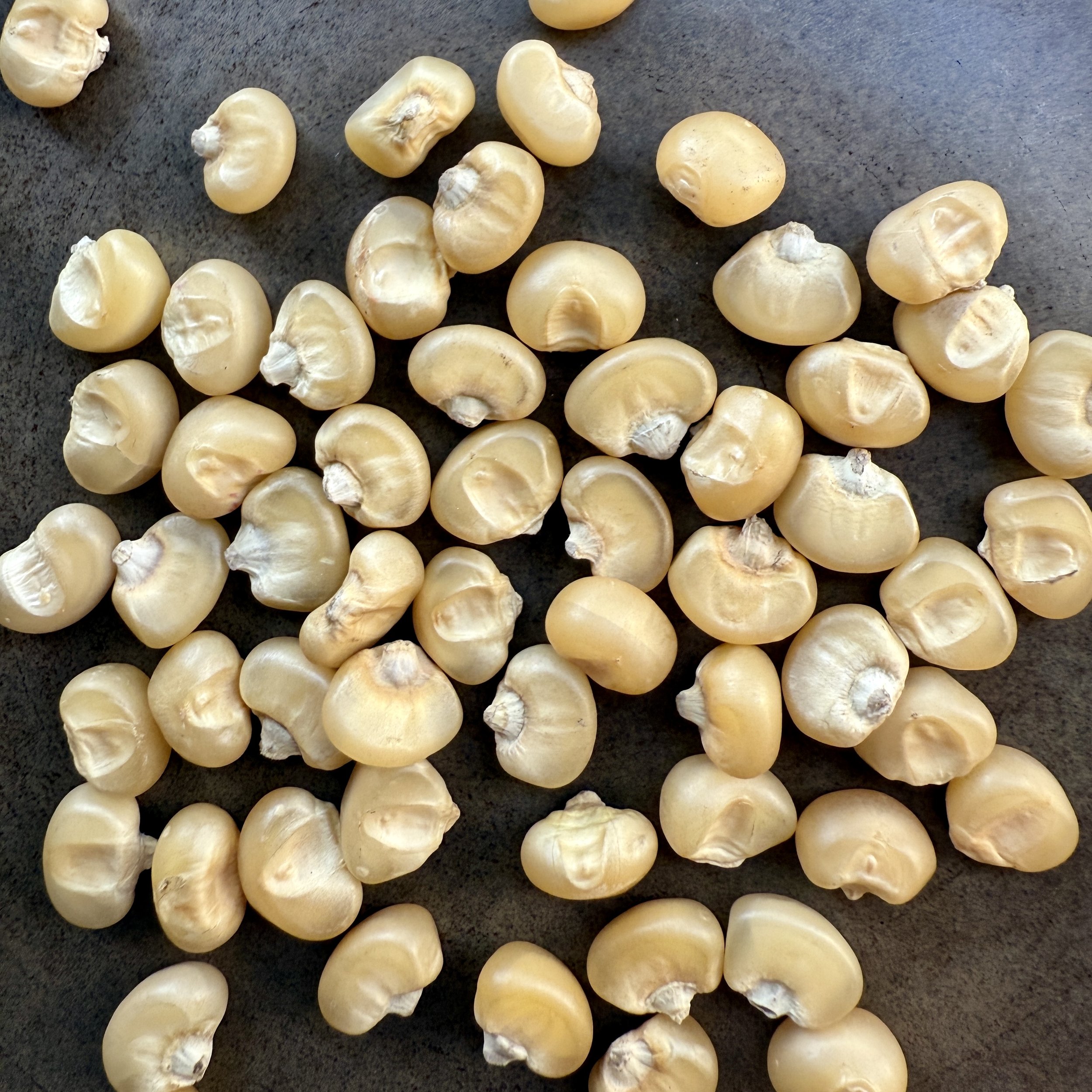 Image 1 of
Image 1 of


Bean, Black Turtle
Product Description: (Phaseolus vulgaris) Following its discovery in Mesoamerica more than 7000 years ago, the common black bean was carried north and south along ancient trade routes, adapting to new climates and cuisines. By the mid-1800s, these beans became a dietary staple throughout the Americas.
Though they may appear black, their skins are actually a very dark purple — colored by anthocyanin, the same powerful antioxidant found in blueberries, grapes, and red cabbage.
This variety in particular (known as Black Turtle) is smaller than others with a dense texture that makes it ideal for vegetarian dishes, staying firm when cooked and absorbing the flavors of other ingredients.
In the field, Black Turtle has proven to be one of the most resilient and productive dry bean varieties out there: reliable, low-maintenance, and high-yielding. A timeless classic, for good reason! Bush habit. Open-pollinated. 50 seeds per packet.
Growing Information: After all danger of frost has passed, direct sow seeds every 3-4 inches in rows spaced 2 feet apart. Avoid handling the plants in wet conditions to prevent the spread of fungal pathogens. At the end of the growing season, allow the entire plant to die back and dry until the bean pods are brown and brittle. Once dry, harvest the pods and crack them open. Sort out any beans that are damaged or showing signs of rot, then store your harvest in a glass jar or other airtight container until use. 95 days to maturity.
How To Save Bean Seeds
Allow the plant to dry out completely. Mature pods will be brown and brittle. Make sure that your plants are receiving adequate airflow to prevent excessive moisture and mold growth throughout the drying process. However, a small amount of mildew spotting on the outside of drying pods is completely normal and has no reason for concern. Once dry, harvest the seed pods and crack them open. Sort out any damaged, misshapen, or rotting beans. Continue the drying process if necessary then store them in a cool, dry place.
Product Description: (Phaseolus vulgaris) Following its discovery in Mesoamerica more than 7000 years ago, the common black bean was carried north and south along ancient trade routes, adapting to new climates and cuisines. By the mid-1800s, these beans became a dietary staple throughout the Americas.
Though they may appear black, their skins are actually a very dark purple — colored by anthocyanin, the same powerful antioxidant found in blueberries, grapes, and red cabbage.
This variety in particular (known as Black Turtle) is smaller than others with a dense texture that makes it ideal for vegetarian dishes, staying firm when cooked and absorbing the flavors of other ingredients.
In the field, Black Turtle has proven to be one of the most resilient and productive dry bean varieties out there: reliable, low-maintenance, and high-yielding. A timeless classic, for good reason! Bush habit. Open-pollinated. 50 seeds per packet.
Growing Information: After all danger of frost has passed, direct sow seeds every 3-4 inches in rows spaced 2 feet apart. Avoid handling the plants in wet conditions to prevent the spread of fungal pathogens. At the end of the growing season, allow the entire plant to die back and dry until the bean pods are brown and brittle. Once dry, harvest the pods and crack them open. Sort out any beans that are damaged or showing signs of rot, then store your harvest in a glass jar or other airtight container until use. 95 days to maturity.
How To Save Bean Seeds
Allow the plant to dry out completely. Mature pods will be brown and brittle. Make sure that your plants are receiving adequate airflow to prevent excessive moisture and mold growth throughout the drying process. However, a small amount of mildew spotting on the outside of drying pods is completely normal and has no reason for concern. Once dry, harvest the seed pods and crack them open. Sort out any damaged, misshapen, or rotting beans. Continue the drying process if necessary then store them in a cool, dry place.
Product Description: (Phaseolus vulgaris) Following its discovery in Mesoamerica more than 7000 years ago, the common black bean was carried north and south along ancient trade routes, adapting to new climates and cuisines. By the mid-1800s, these beans became a dietary staple throughout the Americas.
Though they may appear black, their skins are actually a very dark purple — colored by anthocyanin, the same powerful antioxidant found in blueberries, grapes, and red cabbage.
This variety in particular (known as Black Turtle) is smaller than others with a dense texture that makes it ideal for vegetarian dishes, staying firm when cooked and absorbing the flavors of other ingredients.
In the field, Black Turtle has proven to be one of the most resilient and productive dry bean varieties out there: reliable, low-maintenance, and high-yielding. A timeless classic, for good reason! Bush habit. Open-pollinated. 50 seeds per packet.
Growing Information: After all danger of frost has passed, direct sow seeds every 3-4 inches in rows spaced 2 feet apart. Avoid handling the plants in wet conditions to prevent the spread of fungal pathogens. At the end of the growing season, allow the entire plant to die back and dry until the bean pods are brown and brittle. Once dry, harvest the pods and crack them open. Sort out any beans that are damaged or showing signs of rot, then store your harvest in a glass jar or other airtight container until use. 95 days to maturity.
How To Save Bean Seeds
Allow the plant to dry out completely. Mature pods will be brown and brittle. Make sure that your plants are receiving adequate airflow to prevent excessive moisture and mold growth throughout the drying process. However, a small amount of mildew spotting on the outside of drying pods is completely normal and has no reason for concern. Once dry, harvest the seed pods and crack them open. Sort out any damaged, misshapen, or rotting beans. Continue the drying process if necessary then store them in a cool, dry place.





